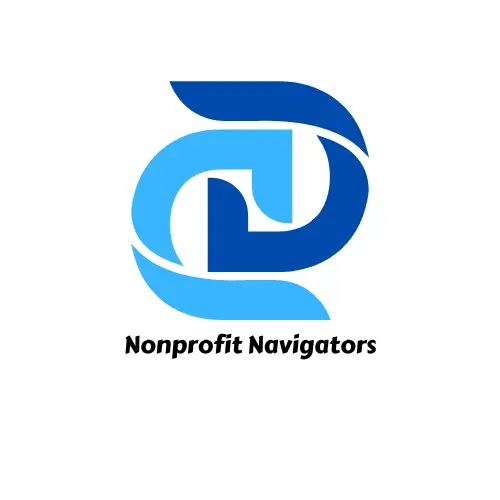This post unpacks strategic planning tips for small nonprofits, offering practical examples and interactive elements to engage you every step of the way.
When you’re steering a small nonprofit, strategic planning might feel like navigating a ship through uncharted waters. With limited resources and an ever-changing environment, the challenge to stay on course while aiming for impact can be daunting.
However, with the right strategies and tools, even the smallest organizations can plot a course to remarkable achievements.
Let’s dive into these strategic planning tips for small nonprofits.
1. Start with a Clear Vision and Mission
Before you can even think about strategies, you need to get clear on your vision and mission. These two elements are the foundation of your entire strategic plan.
- Mission: This is why your nonprofit exists. It’s the reason behind everything you do. A well-defined mission answers the question, “What problem are we trying to solve, and how do we aim to solve it?”
- Vision: Your vision outlines the future you’re working towards. It’s the ultimate goal you hope to achieve through your nonprofit’s work.
For example, let’s say your nonprofit’s mission is to educate underprivileged children. Your vision might be to create an equitable educational system for all children, regardless of their socio-economic background.
Once you’re clear on your mission and vision, you can use them as guiding principles throughout your strategic planning. This will keep your team aligned and focused on the end goal.
Tip: Regularly revisit your vision and mission statements. They should evolve as your nonprofit grows and learns more about the community you serve.
2. Set SMART Goals
Without clear goals, it’s difficult to measure progress. A great way to set effective goals is by using the SMART framework:
- Specific: Your goals should be clear and unambiguous. “Increase our donor base” is vague, but “Increase our donor base by 25% within the next year” is specific.
- Measurable: You should be able to track your progress and know when you’ve achieved the goal.
- Achievable: Your goals should be realistic. It’s great to aim high, but ensure your goals are attainable with the resources you have.
- Relevant: Make sure your goals align with your nonprofit’s mission and vision.
- Time-bound: Every goal should have a deadline for completion.
Example: If you’re a nonprofit that provides job training to women, a SMART goal might be: “Increase the number of women who graduate from our training program by 20% by the end of the next fiscal year.”
Interactive Element: Take a moment to reflect on one of your nonprofit’s goals. Can you make it SMART? If not, adjust it to be specific, measurable, achievable, relevant, and time-bound.
3. Conduct a SWOT Analysis
A SWOT analysis helps you evaluate your nonprofit’s strengths, weaknesses, opportunities, and threats. By understanding these four elements, you can identify gaps, make more informed decisions, and build a plan that capitalizes on your strengths while addressing potential challenges.
- Strengths: What does your nonprofit do well? Do you have a loyal volunteer base or strong relationships with donors?
- Weaknesses: Where can your nonprofit improve? Maybe your fundraising efforts aren’t as effective as they could be, or you lack the necessary technology to streamline operations.
- Opportunities: Are there any emerging trends, funding sources, or partnerships that could benefit your nonprofit?
- Threats: What external challenges could impact your nonprofit’s ability to succeed? This could include economic downturns, increasing competition, or changing regulations.
Example: A nonprofit focused on providing meals to homeless individuals may have a strength in community support but might identify the lack of reliable transportation as a weakness. An opportunity could be partnering with a local delivery service, while a threat might be changes in local food safety regulations.
Tip: Involve your team and stakeholders in the SWOT analysis. Multiple perspectives will give you a more comprehensive understanding of where your nonprofit stands.
4. Identify Key Strategies for Success
Once you have a solid understanding of your nonprofit’s mission, vision, goals, and current situation, it’s time to develop strategies that will lead you to success.
Strategic planning isn’t just about big, grand ideas. It’s about breaking things down into actionable steps that can be implemented immediately. Here are some key areas to focus on:
- Fundraising: Develop a fundraising strategy that aligns with your mission and vision. Diversify your income streams by seeking donations, grants, hosting events, and even exploring social enterprises.
- Partnerships: Building partnerships with other organizations, local businesses, and government entities can provide you with the resources and support needed to scale your efforts.
- Community Engagement: Ensure you are continuously engaging with the community you serve. Understand their needs, adapt to changes, and communicate transparently about your nonprofit’s work.
Story:
Let’s take a look at how one small nonprofit implemented a strategic planning tip to great success. A nonprofit that provides career coaching to young adults in low-income areas realized that their fundraising strategy wasn’t as effective as it should be.
They decided to partner with local businesses to host job fairs and career workshops. Not only did this give them access to additional resources, but it also provided a platform for the young adults they serve to connect with potential employers.
As a result, their funding increased, and their mission grew stronger. This partnership model proved to be one of the most impactful strategies in their strategic plan.
5. Build a Strong Team and Leadership
No strategy will work unless you have a strong team behind it. For small nonprofits, every person on the team plays a crucial role in executing the strategic plan.
- Recruitment: Focus on hiring individuals who are passionate about your mission. These people will work hard, bring fresh ideas, and help move your nonprofit forward.
- Training and Development: Provide ongoing training for your team so they’re equipped with the skills and knowledge to execute the plan successfully.
- Leadership: Leadership should be shared and collaborative. Encourage open communication and make sure everyone’s ideas are heard.
Example: A small nonprofit that focuses on environmental conservation decided to implement a leadership development program. They trained their staff and volunteers in project management, community engagement, and sustainability practices. As a result, they saw more projects come to fruition and greater community involvement, all thanks to the leadership capabilities of their team.
Tip: As your nonprofit grows, remember to adjust your leadership structure to ensure it stays aligned with your strategic goals.
6. Regularly Monitor and Adjust Your Plan
Strategic planning isn’t a one-time event—it’s an ongoing process. As the landscape changes, so too should your nonprofit’s strategies. Regularly review and adjust your plan to ensure that you’re on track and making progress.
- Monthly Check-ins: Have monthly meetings with your team to assess progress on your strategic goals.
- Annual Reviews: At the end of the year, review your progress as a whole and evaluate whether your strategies are still relevant.
- Adapt: Don’t be afraid to adjust your plan if things aren’t working. The key is to be flexible and open to new ideas.
Example: A nonprofit focused on education for girls in rural areas initially set a goal to build 10 schools in the first year. However, due to unforeseen delays in construction, they couldn’t meet that target.
Instead of giving up, they adjusted their plan by focusing on building partnerships with local governments to speed up the process. Their flexibility allowed them to stay on track with their mission while adapting to external challenges.

Time to Take Action!
By following these strategic planning tips, your small nonprofit can position itself for long-term success. From defining your mission and vision to setting SMART goals and building a strong team, every step counts.
Don’t wait for the perfect moment—start applying these strategies today and watch your nonprofit thrive!
Want more expert tips and resources to help your nonprofit grow? Subscribe to the Nonprofit Navigators Newsletter for access to job opportunities, grant resources, exclusive webinars, events, and much more.
Stay ahead of the curve and get the guidance you need to move your nonprofit forward.




